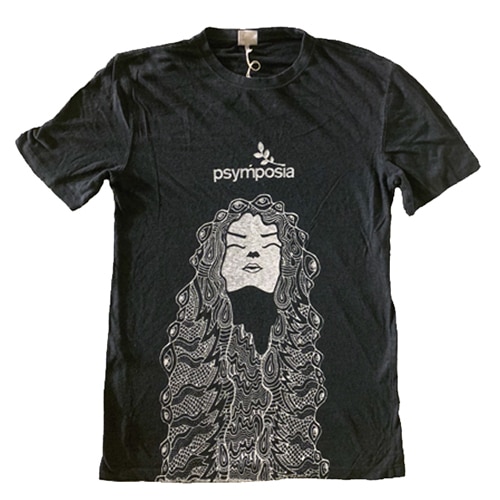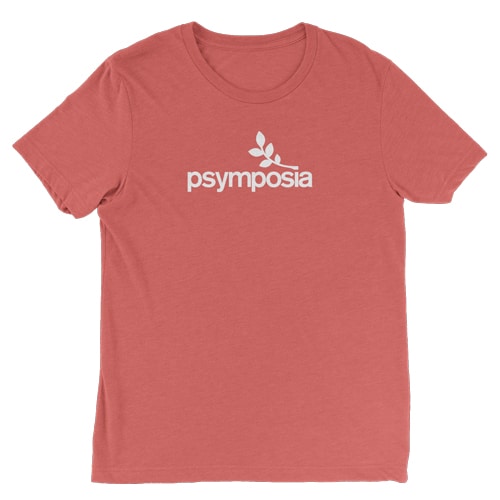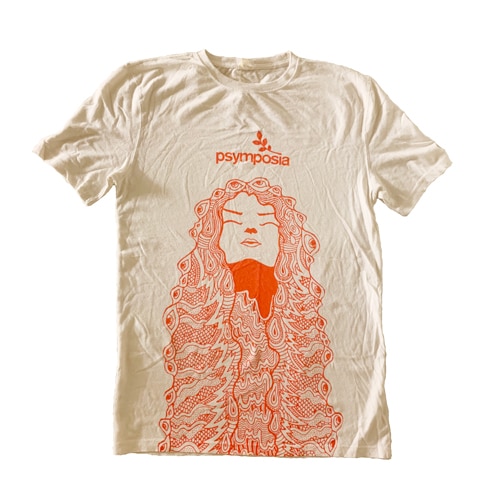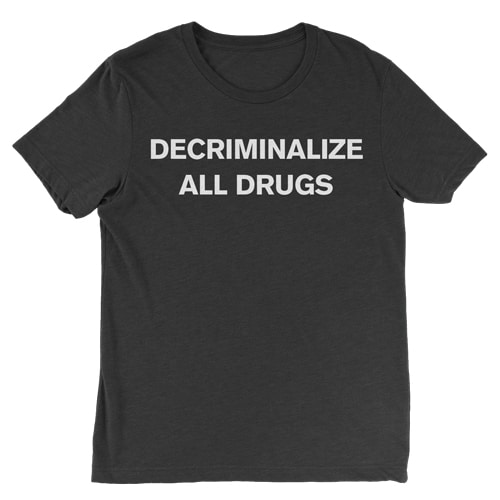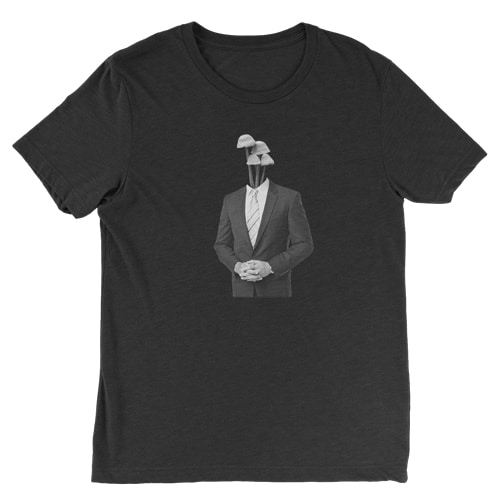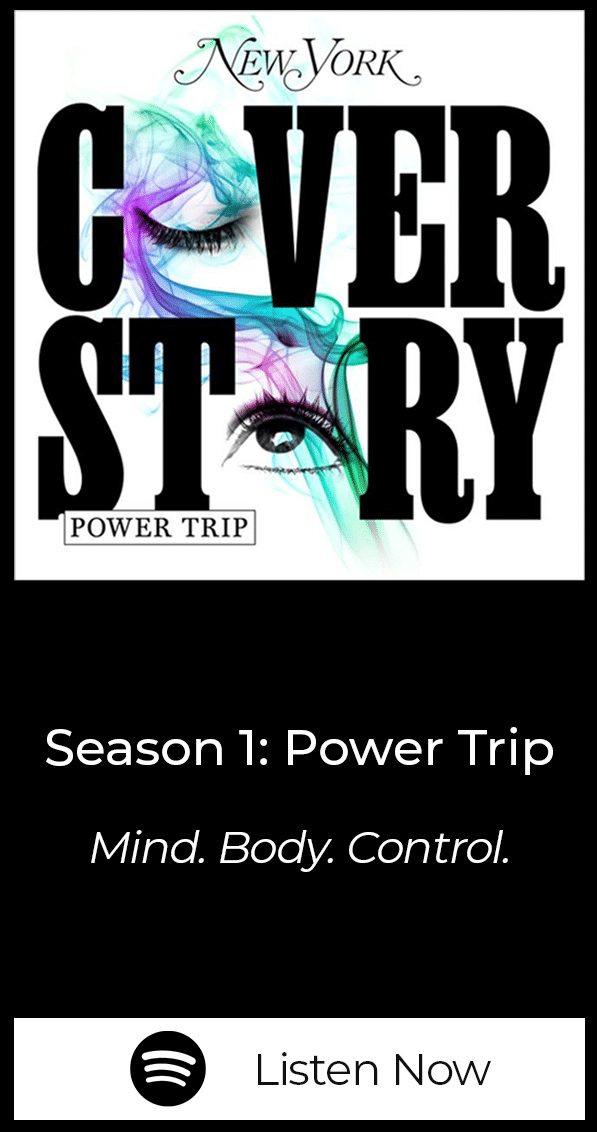Indie Film ‘Debbie and Doug Drop Acid in the Desert’ is a Visual and Emotional Trip
‘Debbie and Doug Drop Acid in the Desert’ director, Scott Brown, talks mind-altering drugs, creating psychedelic visual effects, and dealing with depression.
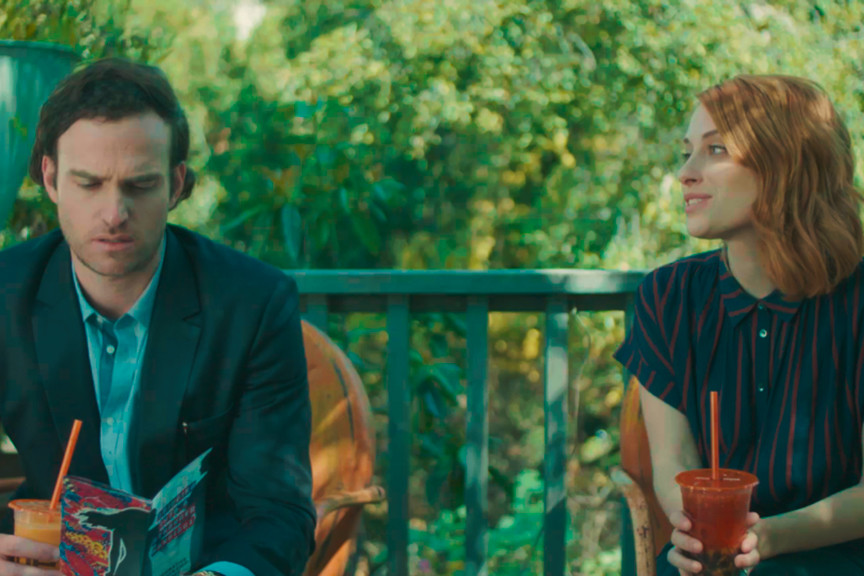
Psymposia is a 501(c)(3) nonprofit research and media organization that offers critical perspectives on drugs, politics, and culture. We rely on contributions from our readers and listeners. Your support is vital to sustaining Psymposia.
Support Psymposia’s independent journalism on Patreon and help us drive the Mystery Machine! We’re a bunch of meddling kids who are unmasking the latest shenanigans on the psychedelics beat.
Debbie and Doug Drop Acid in the Desert is a short film, officially released April 14, about a couple attempting to reignite their marriage by taking a psychedelic trip together. The process opens their eyes to the unacknowledged cracks forming within their relationship, as well as the cracks they have been attempting to ignore in themselves as individuals. While, on the surface, this film sounds like it could fit into a line-up with “Cheech and Chong” or “Harold and Kumar,” I would argue that the emotional depths explored in this film make it more akin to the likes of a dramatic comedy such as “The Big Sick” or “Juno”: undeniably funny movies that attempt to give a more insightful, introspective view of their characters’ emotions and relationships.
[There are a number of spoilers in this interview. Give the film a watch first.]
The depth of this film is achieved in part thanks to an incredible cast of actors and actresses— including Angela Gulner, Zack Gold, Peres Owino, Paul Scheer, Larry King, Maria Bamford, and Al Thompson—and also thanks to the oversight of co-writer and director Scott Brown, who channeled much of his own emotional experience and opinions on psychedelic drugs into the project. Brown—who co-founded the production company Liquid Light, has run Dwayne “The Rock” Johnson’s YouTube channel, and who has directed a number of other award-winning short films—spoke with me about the origins of “Debbie and Doug,” how the project helped shape his voice as a storyteller, and his process of translating a psychedelic experience into film both visually and emotionally.
Russell Hausfeld: I watched “Debbie and Doug” with my partner, and the two of us have had psychedelic experiences together. It was exciting to see that depicted on screen, and I had a few moments where I got some nostalgic butterflies seeing the characters move through different emotional spaces together.
Scott Brown: That was the goal. At the end of the day, you can only represent artistically the visuals and the—I suppose—physical experiences of a trip so well. But, the emotional process of a really good trip is one that is a journey usually through darkness toward light, I think. And, that is what we wanted to capture above all.
Is this a personal story? Where did this come from in your life?
SB: I always try to make this balance where—it’s a personal story that I want to speak to issues I believe are more universal. I think that’s the best kind of storytelling you can do. So, first of all, there is a poem at the end of the film that I actually wrote on acid in Joshua Tree. I just had all these lines going through my head and I was like, “I should write these down. I don’t know what they mean. But, it felt very relevant to the time.” And, then I actually lost a really important job to me in the entertainment industry, and I’ve always had some struggles with anxiety and depression. I’m fortunate enough that, when things are good, I don’t deal with those issues in a bad way. I manage them through meditation and therapy and things like that. But, when difficult crises happen in my life, I really have to wrestle with those things inside of me. And, usually growth comes from it.
I was going through a time like that. I was in a pretty dark place—not a dangerous place, but emotionally I was walking through life with a great deal of sadness. And, the co-writer-slash-co-star of the film, Zack Gold, came up to me and was like, “Hey, man. If you’re not doing anything, I have $2,000. Let’s make a movie.” And, I was like, “Well, sure. Let’s make a movie.” He had the heart of the premise, which was a couple goes out in the desert to save their marriage with acid.
He had always imagined it as a much more broad, fun kind of drug-fueled romp of a movie, like “Harold and Kumar.” And, I really felt like—I was going through all this stuff, and I always have dealt with the messes in my life best by working out the things going on inside of me through storytelling. Psychedelics have been, in my life, useful in helping me work through certain parts of my psyche and my soul and bring me to a fuller, more-complete version of who I believe I am, and how I view the world. They aren’t the only thing, but they have been a tool.
So, I feel like so often in life—and I certainly was experiencing this—the times when we are feeling pain, the antidote to that pain is usually a form of love. Whether romantic, platonic, self-love, familial love, any of those things. And, depression and anxiety are liars and con-men who try to block you off from love. They tell you, “Don’t share your problems with people, no one wants to hear about this stuff, you would just be burdening people by telling them.” When, in fact, when we show up to people we really care about, sharing that can be the most powerful medicine we can have.
With that in mind, I was like, “I think this movie should be about things that are more than just a drug-fueled romp, it should be about a journey that each of them takes into themselves, where they literally confront the dark, false beliefs they have within them. And, by doing so, they allow themselves to love not only themselves, but each other once again.”
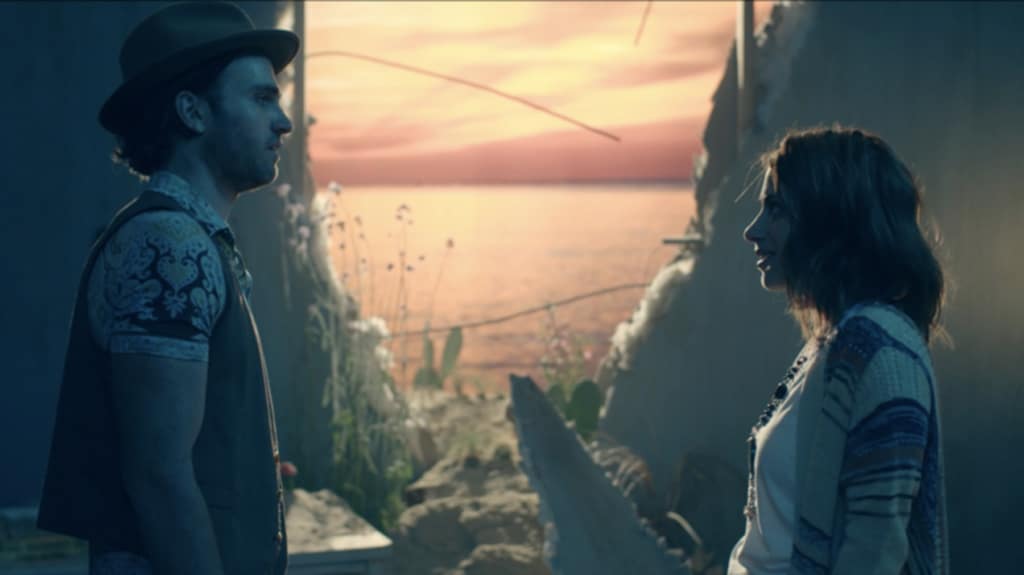
It’s interesting that you started this whole process after the loss of an important job to you. And yet, after completing this project, you were able to start your own production studio, Liquid Light. Did Liquid Light form while this project was coming together?
SB: Yeah. I have run The Rock’s YouTube channel in the past. And, that was a wonderful experience. My producing partner and I were like, “This is something people want. Something that athletes and actors and known personalities want.” They want to crack YouTube. But, YouTube is the hardest of all social media, because the content is ideally around 8-12 minutes, it’s really like a small episode of TV. Not to get too into the weeds on Liquid Light, but what we do is, we go up to a celebrity or actor or whoever and say, “Hey, if you want a YouTube channel, we will put up the money to make it, it won’t necessarily go into your pocket, but we will use our expertise, plus those funds, to produce videos for you and get your channel to a really robust, awesome place.”
But, Liquid Light didn’t start until April of 2018. So, I finished production on “Debbie and Doug” in January 2018. I finished post-production right as Liquid Light was getting started.
That’s cool to come through that dark place, through that film, and into a new career space. The emotional arc of that period of your life reflects that of the film in a kind of way.
SB: I’ve been making stuff forever, and my favorite comedies are really comedies that are structured like dramas, but are very funny and situationally interesting. But, at their heart, they have this true emotional arc to the story.
Five years ago, maybe six, I had to really start confronting the truth of my issues with anxiety and depression, and really having to put in the work to overcome them. And, through this process, something that really distilled through “Debbie and Doug,” I found this part of my voice as a storyteller where I can share this struggle that I thought was unique to myself—because, again, anxiety and depression want you to think that you’re the only one who has these issues, when that is really so far from the truth. And, now that idea permeates all the work that I do. It has reinforced that it’s all about connection, vulnerability, empathy, compassion, and what inhibits us from doing those things, and what frees us to exercise those very-valuable mental practices.
I appreciated the structure of the acid trip in “Debbie and Doug.” I go into any media representation of a psychedelic trip wondering if it will have nuance to it. I have seen some representations of psychedelic trips that feel dumbed-down. So, the different layers of the trip, visually and emotionally, in your film really struck me. It didn’t feel like two people just bumbling around acting super high.
SB: It wasn’t, “Woooooah, man.” Yeah. And, that was really important, because—I’ll tell you, man—it would be false for me to say that psychedelics are responsible for who I am. Because, life has a zillion facets to it. But, I did psilocybin for the first time in high school, actually, and it wasn’t like a lightning bolt that completely changed me. But, it unlocked something. I feel like it started me on the journey towards the man I have become. And, a lot of things were happening at the time, so I don’t want to over-attribute. But, I have always viewed psychedelics as a valuable tool if you can use them responsibly. And, obviously, anything from food to sex to anything good in life, it can be overdone. But, treated with a lot of respect, I find so much spiritual and psychological value in psychedelics, and it was really important for me to represent that.
I was on the news in Santa Barbara when we were at the Santa Barbara Film Festival, and the news woman—she was really cool—but, she was like, “A lot of people say that drugs can really open your mind and, like, make you happy. Is that true?” And, I was like, “Well, it’s a lot more complicated than that. It’s ultimately about a tool that unlocks the ability for these characters to go on one of the most difficult journeys you can have, which is going within.” So, that is what I wanted to represent.
“Debbie and Doug Drop Acid in the Desert” is meant to be a title that sounds like it’s going to be this whacky drug romp, right? And, it was really important for that to be the audience’s expectation at first. It was all about making the audience feel like there was something more coming—even the big dramatic sound risers that lead into banality. Or, about making the audience think, “Something else is coming. What is it?” And, it shifts toward this thing about examining yourself, which you don’t need drugs to do, necessarily. Hundreds of thousands of people do it through therapy or through meditation. This film was about my experience, and how using psychedelic drugs has been a tool to help me get there.
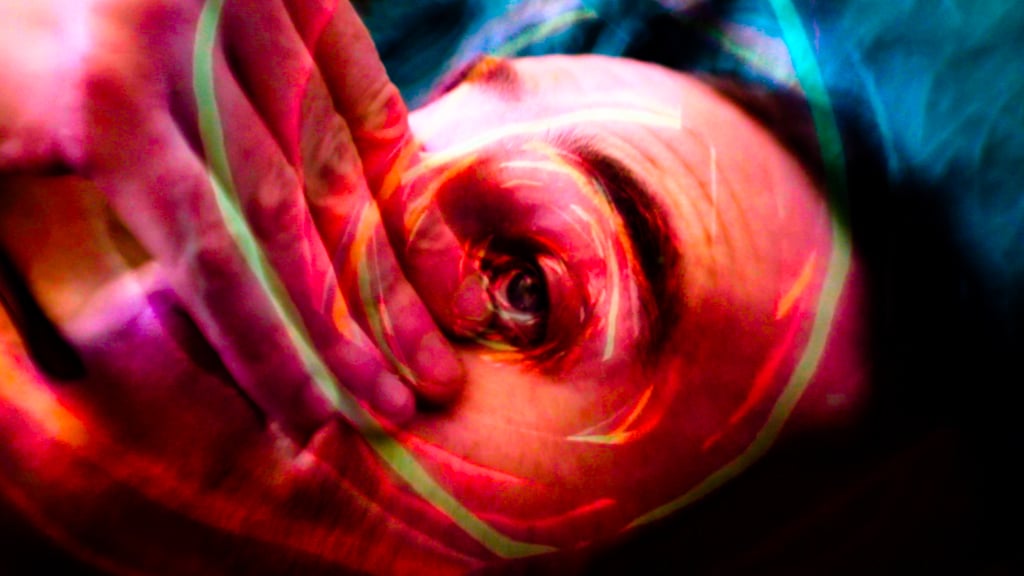
I think films like yours can help show people a more honest look at what using psychedelics as a tool can look like—for personal growth or growth within a relationship. Debbie and Doug start out addressing petty problems and slowly dip into deeper issues, and by the end, they have separated from one another and are facing themselves as individuals. They have to confront themselves before they can come back to one another. And then, by the end, they are quietly walking arm-in-arm. I related to that, in that when I’ve experienced psychedelics with someone I love, we both experience these giant swells of emotion—sometimes very negative—and by the end we have almost lived a whole lifetime in our heads, side by side. You can come out of it a little more grounded, more connected, more alive—in the best case scenario.
SB: In the times that I have had strong negative moments in trips—and not all of them are like that. But, in the times where I have had very strong negative ones, you really have to face—not necessarily that you face death—but, you really, truly come face to face with the worst possible ideas. For me, it manifests as, “You’re a horrible person, you don’t have any friends, you will never be loved,” and you have to face that. You have to live through that. You come away from it, and when you start to confront and really experience those thoughts that exist within you, but work through them, I find that as you start to come away from the bad part of the trip—maybe it’s because the drugs are wearing off, to an extent—but, I find that positive thought and love enters the picture.
I have a couple of friends who—thank god they survived—almost died in car accidents. And, for three of four months afterwards, they looked at life from a perspective that individuals rarely get. Because, life naturally causes us to not realize how vibrantly beautiful life is every day. And, I think going through a challenging trip, where there is opportunity for introspection, helps strip away some of the bullshit, for lack of a better term. And, when you strip away the things that don’t matter—the false fears and false beliefs we fill ourselves with—what is left but gratitude and love? And, the truth that, while this existence is enormously complicated and fundamentally ends in tragedy, it is still a beautiful opportunity to do the best we can with those that we love.
Thanks for sharing that. While talking about the film with my editors, we all really enjoyed it. But, we stumbled on one trope that shows up, which I was hoping you could speak to. That of the “magic brown person“—think “The Green Mile” or “Bagger Vance”—in which the black characters show up on screen to help the white protagonists in need, then essentially disappear. Was this a media trope that you were aware of? While I do think Peres Owino’s and Al Thompson’s characters are strong and add to the film, I am curious if you feel that they dip into the territory of that trope?
SB: I’m glad that you asked that and I am happy to answer it. It came up a couple times and I care about it a lot.
One of the reasons that I love filmmaking is that it teaches you things each time you go through the process, not just about filmmaking, but about the human experience as others perceive it. I was aware of the trope you describe as were several of my producers, and we thought very hard about it. Both Peres and Al are fantastic actors that I had known and wanted very much to work with them and also get as much diversity into the film as possible. I just knew they were going to kill those parts and deliver the incredibly powerful performances that the film required to work.
Because they were such powerful characters that radically change the trajectory of Debbie and Doug’s life I felt we were in safe territory. But, if the film is perceived to employ that trope for some reason, and propagate the negative aspects of it, it was not intentional at all and it’s going to be something that I will always be much more mindful of. I want to make movies for anyone, about everyone, and the way that casting choice came across to some is something I will always remember as I continue to make films.
Another topic I wanted to talk about was the visual effects in the film. What techniques were used throughout the production process to achieve the psychedelic visual effects?
SB: I actually did probably about 75% of the visual effects. I had some help from people—a number of friends who work at big film effects houses. So, I would look for different representations of trips online that I had seen. Even small GIFs and things like that. Or, times in movies. And, I would go to my friends and say, “Hey, I like this part, I don’t like this part,” and they would give me tips and ideas. And, it really turned into this experiment.
The wolf at the end of the film is actually digital. I’m not as good at, like, photorealistic things. Like, putting a real wolf into a real environment. But, the majority of the trippy effects were done by me.
It was really about combining old techniques that have been used in psychedelic art for a long time—for example, oil and water, where you put colored oil and water together, very 60’s-style, and you spin the water, you get all these different blobs and things like that. We also utilized a lot of textures and things like that. And, combining these older techniques with things like chroma mapping. Basically, with chroma mapping, you tell the computer to take a look at an image and assign values to the different contrasts, and then what you can do in a program called After Effects is introduce random things that work within a patterned structure. So, I told the computer to look at the image, and zero-in on the blacks—all the contrast in the image—and then oscillate it by width based on a formula that was somewhat random. So, in the scene with the guy who is yelling at Debbie and Doug, that is where everything is sort of subtly flowing and blurring and breathing.
Then, another thing we did pretty heavily was that we used something called Google Deep Dream. I hired a programmer to build me a little box with, technically, an AI in it. And, we would feed it—it’s called Deep Dream. Google made it because they wanted to know—when they were trying to teach an artificial intelligence to recognize images, it is useful for them to understand what the computer saw, so they could see how the computer would learn. So, they created a system where a computer could look at a single image and spit out what it saw and it just looked crazy and psychedelic. Just nothing that the human mind could really create. And, it was a little tiny bit disturbing, as well, which is sometimes what the visuals of a psychedelic trip are tinged with—a little bit surreal. So, we created an AI program, and it would look at each frame of a sequence individually, interpret that sequence based on the previous iteration of the image it had just looked at, and that’s where you get a lot of the trippy, weird shapes and movement. A lot of it was literally an AI just trying to understand our film with certain parameters built in.
That’s awesome. Deep Dream is a really fun program to mess around with. One scene that really struck me visually was when Debbie and Doug enter the “Happy Place.” One, I noticed all these subtle light effects that were happening towards the peripherals of the screen. And two, the entities in the “Happy Place” were absolutely horrifying to me, but I thought that decision was perfect. Because, like you said, there is something about visuals in a psychedelic trip where everything is absolutely beautiful, but equally demonic and surreal all at once. Was that a conscious decision?
SB: For the effect used specifically in that scene, I really wanted to try—even in the visual effects like the water-ink photography—I wanted to use organic photography, not computer-generated from scratch, as much as possible. I think that organic quality lends itself to the trip. In that room in particular, we surrounded the lens with a triangle of prismatic glass, and moved another prism over that. So, it was almost completely practical effects in that room, in particular. The cinematographer was literally going handheld. That room’s effects really come from a combination of the frenetic, handheld camera zooming around a lot, having this prism mounted on, and moving another piece of prismatic glass around in front.
You know, in a trip, the visuals kind of go from an intensity, and ebb and flow away from intensity. In that scene, I wanted to capture that the world was still affected, but the effects were starting to drop off, even though the emotional story was continuing to build in intensity.
Then, the make-up artist was like, “We can afford these five faces,” and one of them was quote-on-quote the “alien” face. And, I was like, “Oh, it’s got to be the alien face.” Because, the whole film is about contrast, right? You’ve got these entities saying that most beautiful, positive affirmations, free of any kind of worry and doubt. Yet, at the same time, they are kind of scary. That’s what trips are.
I like that you mention the “contrast” and contradictions of the scary entities with beautiful affirmations. In my experience, psychedelics can help me hold separate or contradictory thoughts in my mind at the same time. So, I thought it was cool how Doug’s character—around the middle of the film—says, “I think I hate acid,” and at the end he says, “I think I love acid.” Both of those things can be true. There are plenty of other examples, but that one shined through for me in regards to acknowledging contradictory thoughts.
SB: That’s what life is, right? I like to think that “Debbie and Doug,” in a lot of subtle ways, want their world to be black and white. They want it to be simple. A lot of people have asked me, “How can Debbie keep the secret about her dad from her husband. I don’t really understand how she would ever lie to her husband about her father’s death.” And, I think for most people that is an understandable take. But, for Debbie, she—in her life—wants so desperately to reduce her life down to a simple idea that, “If I have X,Y, and Z, if I check these boxes, I’ll be happy, I want life to be simple. Because, otherwise, I have to face the truth, that my past and the way my life is is extraordinarily complicated.” And, once she finally accepts that and she realizes how complicated her life is, she can accept the truth of life and start to work through the problems, rather than deny them and pretend like she doesn’t have them.
The end sequence, when the poem is being read, I enjoyed seeing Debbie and Doug walking around together. I interpreted them walking around the compound in that sequence as, maybe, memories or snapshots of what was actually happening while they were experiencing the trip depicted throughout the film. Some of the conversations that we saw play out in the “trip world” were probably actually occurring in their heads or between the two of them in the moments while they were quietly walking through nature.
SB: The intent of that scene was, you know, as the drugs wear off, after a really good trip—and a really good trip, in my opinion, might have some difficulties. I don’t ever think a trip should be traumatic, but it should certainly strip away some things. Sometimes you have to go through a sort of crucible. And, at the end, once you come away from the fire, you are left with this kind of magical feeling that is hard to put into words. A kind of reflection. And, that is what that scene is meant to be.
But, I agree, I’m sure there was a conversation outside by those rocks where they admitted those truths to each other and all those things. So, yeah, I’m glad to hear you say that.
Is there anything else we didn’t touch on that you would like to say about the film?
SB: Not really. I would say that in this time [with COVID-19 isolation], when we are really separated—while I am mourning for every person and going through myself, even, some re-ignitions of anxiety and depression—I hope that people who are dealing with that look at the film and know that at least one other weird filmmaker out there in the world feels exactly the same way they do.
Also, “Debbie and Doug” was produced by Jessica Goldstein, Troy Guthrie, Brenden Hexberg, Austin Michaels, Dylan Sachse, and Steven Tobler. They worked so tirelessly for nothing but their love of the movie, and I always want to recognize them for that.
To learn more about this film, its cast, and crew, visit the website, www.tripintolove.com.
Hey! Before you go… Psymposia is a 501(c)(3) non-profit media organization that offers critical perspectives on drugs, politics, and culture. We strive to ask challenging questions, and we’re committed to independent reporting, critical analysis, and holding those who wield power accountable.
Our perspectives are informed by critical analysis of the systemic crises of capitalism that have directly contributed to the unmitigated growth of addiction, depression, suicide, and the unraveling of our social relations. The same economic elite and powerful corporate interests who have profited from causing these problems are now proposing “solutions”—solutions which both line their pockets and mask the necessity of structural change.
In order for us to keep unpacking these issues and informing our audience, we need your continuing support. You can sustain Psymposia by becoming a supporter for as little as $2 a month.
Russell Hausfeld
Russell Hausfeld is an investigative journalist and illustrator living in Cincinnati, Ohio. He has a Bachelor’s degree in Journalism and Religious Studies from the University of Cincinnati. His work with Psymposia has been cited in Vice, The Nation, Frontiers in Psychology, New York Magazine’s “Cover Story: Power Trip” podcast, the Daily Beast, the Outlaw Report, Harm Reduction Journal, and more.
